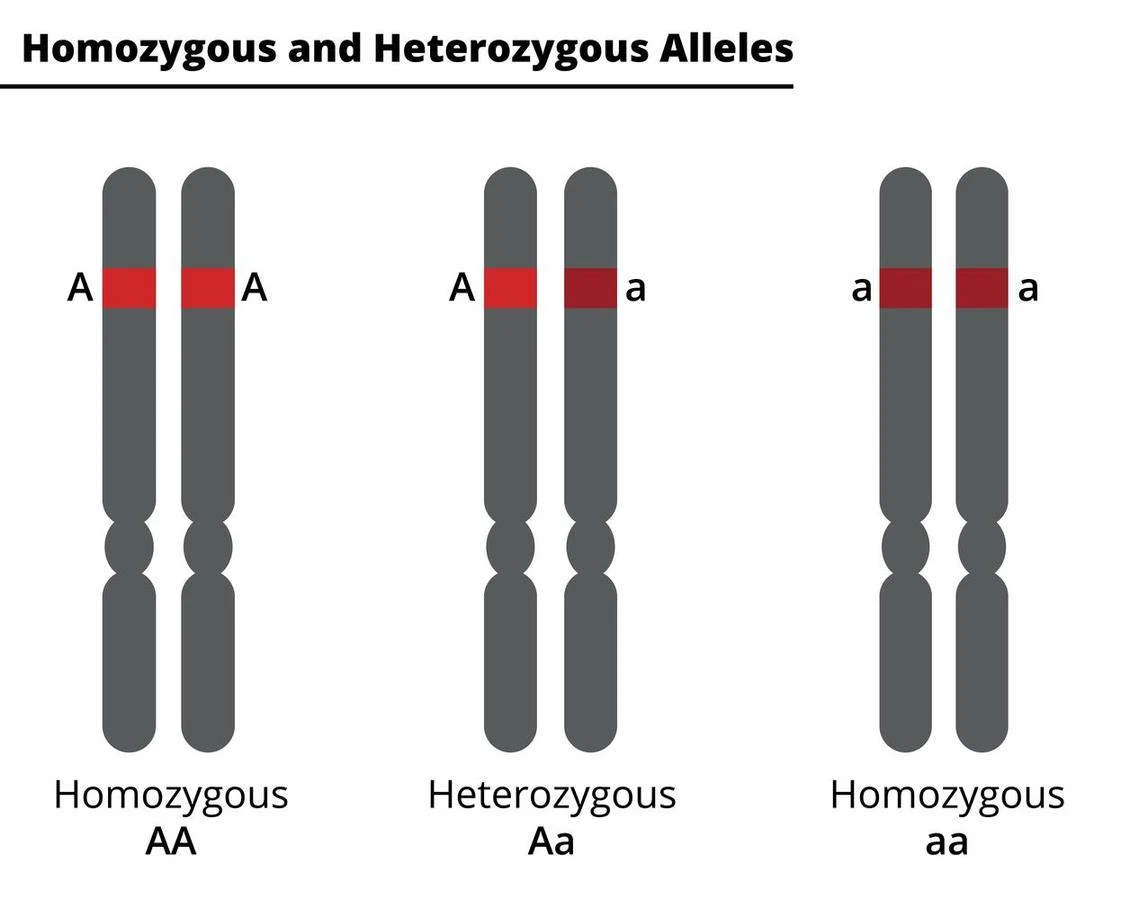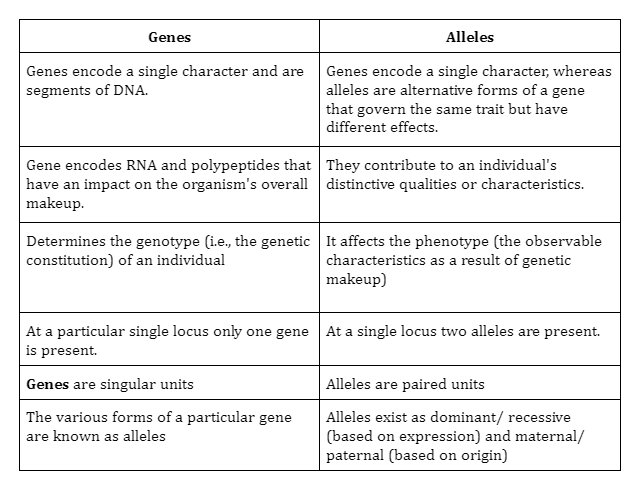Introduction
An allele is a variation of a certain gene. It is an alternative form of a gene. William Bateson and Edith R. Saunders coined the word “allele“. Alleles were originally known as “allelomorphs”. These paired copies of the same gene convey information for the expression of the same characteristics, yet they have distinct effects on people within a population. Alleles are always located at the same location on a chromosome. On homologous chromosomes, alleles of a gene occupy corresponding locations. Alleles are part of DNA and hence they are made up of a deoxyribose sugar, a nitrogen base and phosphate group.
Types of alleles
There are two types of allele found, they are as follows-
Homozygous alleles- These are identical alleles on a diploid organism’s chromosome. The organism is referred to as homozygous recessive for that particular trait if both alleles are recessive (aa). In contrast, a person could be homozygous dominant, if they have both dominant alleles.
Heterozygous allele– These refer to an organism that has two distinct alleles at a same locus on a chromosome. In this case one allele establishes dominance (known as the dominant allele) and is expressed while the other allele (known as the recessive allele) is not expressed.

Functions of alleles
Following are the function of a allele
- The various alleles define the various “traits” of a particular character.
- The external phenotype of an organism is determined by the inherited alleles.
- The observable traits are determined by interactions between alleles.
- Alleles encode for improtant proteins, that are necessary for the survival of an organisms.
- Mutations in alleles can be fatal or can lead to conditions such as CFTR, Achondroplasia, Sickle Cell Anaemia, etc.
Difference between gene and allele

Summary
An organism’s genetic makeup determines all of its traits, including its physical and metabolic properties. An allele is a gene’s alternate form with minute sequence variations. On homologous chromosomes, the allele(s) for a particular gene are always found at the same locus. A gene’s allelic variants enable more diverse detectable phenotypes among organisms. This leads to more genetic diversity in various species. Different hair colour, eye colour, skin pigmentations, etc seen in the population is due to the alleles for these respective traits. Genetic illnesses like Cystic fibrosis, Huntington’s disease, Sickle cell anaemia, thalassemia, etc. can be caused due to mutations present in various alleles.
Frequently Asked Questions
1. What is a gene?
Ans: Genes are the functional unit of heredity that determine an organism’s unique features and are transmitted from parents to offspring or daughter cells.The term gene was coined by Wilhelm Johannsen in 1905.It encodes RNA and polypeptides that have an impact on the organism’s overall makeup.Any organism’s appearance, behaviour, and metabolism are critically impacted by gene expression.
2. What are multiple alleles?
Ans: In a group of organisms or species, there may be more than two distinct gene forms, which are referred to as multiple alleles. Although the genotype of the population’s members still only contains two alleles, each person may have a different set of alleles.
3. How many alleles per gene are there in humans?
Ans: Since humans are diploid organisms, each genetic locus contains two alleles for each gene. During gametogenesis these alleles divides into different chromosomes. Following fertilisation, the zygote obtains two copies of every gene, one from each parent. These copies may or may not be similar.
 Mission Statement
Mission Statement
“Empower every student to achieve full potential”
88Guru has been established with the social objective of making quality video-based learning material available to all Indian students. Technology, Connectivity and Social Media are rapidly changing the world of Education and we wish to lead the transformation of the tuition industry in India.
88Guru is the perfect complement to the current tuition model. 88Guru creates a wonderful opportunity for children and parents to bond while engaging in a valuable learning activity. It also provides the complete curriculum at your fingertips for those moments when you need some help at short notice. We believe that this mode of tuition could be transformational, adding hours to a child's day while providing complete control over the learning process.
Every course is taught by the best teachers from India's top schools and conducted in an engaging manner to keep students involved. The e-learning process consists of video-based instructions, computer-graded assignments, and a dashboard which allows the student and parent to track progress.


